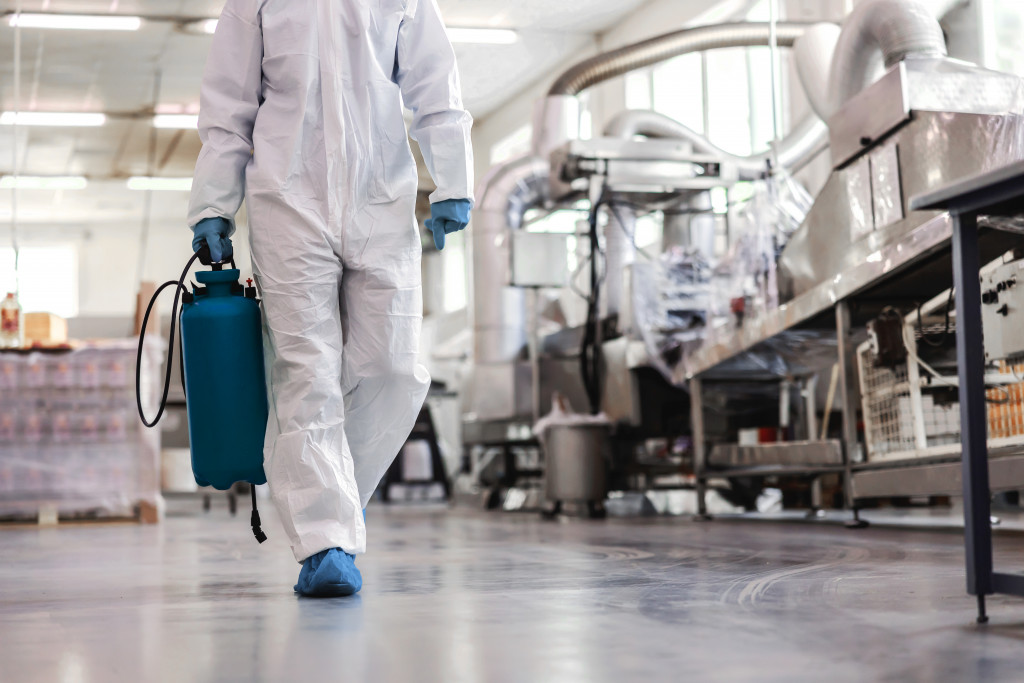• Ensuring the factory has a medical infirmary stocked with beds, medical equipment, and laboratory equipment.
• Providing protective gear and safety training to workers to reduce the risk of injury on the job.
• Hiring an on-site medical professional to provide immediate medical care for workers who suffer from injuries or illnesses.
• Conduct regular safety inspections to identify areas where improvements could be made.
• Document any findings from safety inspections to further enhance employee safety conditions.
Working in a factory is no easy feat. It can be physically demanding, dangerous, and frequently hazardous to one’s health. As a business owner or leader, it is crucial that you prioritize the health and safety of your employees by implementing specific measures to ensure they can work in a safe and healthy environment. Here are some ways companies can do this.
Fully Equipped Infirmary
The first step is ensuring your factory has a fully equipped infirmary. It’s crucial that it is easily accessible to all workers so they can get medical assistance when needed. Here are some standard things an infirmary should have:
Hospital Beds
There should be beds available to provide a comfortable place of rest for injured or ill workers. There are durable hospital beds for sale designed to meet factory workers’ needs.
Medical Equipment
In addition to beds, it is also vital for a factory infirmary to be stocked with medical equipment such as bandages, antiseptic creams, thermometers, and other necessary items. This can also include over-the-counter drugs such as painkillers and cold medication.
Essential Laboratory Equipment
A well-equipped infirmary should also have basic laboratory equipment such as a microscope, stethoscope, and other diagnostic tools. This will enable workers to diagnose illnesses or injuries quickly before seeking medical help from outside sources.
On-site Medical Professional
Having an on-site doctor or nurse is important to provide immediate medical care for workers suffering from injuries or illnesses. If possible, hire a medical professional that has experience dealing with industrial injuries and illnesses.
Ambulance Services
In a severe medical emergency, having an ambulance service on-call can help ensure that employees get the medical attention they need quickly. Partner with a reputable, well-equipped ambulance service to handle any medical situation.
Quality Equipment and Machinery
Ensure that all equipment and machinery used in the factory are of good quality, safe to operate, and regularly maintained. This will help reduce workers’ risk of injuries or illnesses due to faulty machines.
Before purchasing, inspect each piece of equipment to make sure they meet industry safety standards. For example, all machines should be fitted with protective guards and signs to alert workers of potential hazards.
You should also focus on trusted brands and suppliers when purchasing machinery and equipment. This way, you can ensure they are of the highest quality and meet all safety requirements.
Protective Gear and Safety Training
In addition to providing quality equipment, it is also important to provide protective gear for your employees when working with hazardous materials or operating heavy machinery. This could include safety glasses, gloves, hard hats, steel-toe boots, and other protective clothing that can help reduce the risk of injury on the job.
Moreover, educating your workers on proper safety protocols and procedures is important. This could include teaching them how to operate certain machinery, providing safety instructions when handling hazardous materials, or demonstrating the correct way to lift heavy objects to reduce the risk of injury.
Additionally, regular refresher courses on topics such as first aid or CPR can help keep everyone informed on handling potential accidents or emergencies if they occur on-site. For instance, if an employee were injured using an industrial machine, there should be proper procedures for handling any injuries that may have occurred due to their use of the said machine.

Regular Safety Inspections
Finally, you must conduct regular safety inspections within your factory. This should involve checking the condition of all machinery, ensuring that protective gear is being used properly, and monitoring employee behavior to ensure they follow safety protocols.
Documenting any findings can also help you identify areas where improvements could be made to further enhance employee safety conditions. For starters, you could record any faulty machinery and any safety violations and issues you find during inspections.
Furthermore, regular safety inspections can help ensure that any potential hazards are addressed before they cause serious injury or illness to workers. If possible, have a team of safety supervisors responsible for regularly conducting these inspections.
Prioritizing health and safety in the factory is essential for any business looking to succeed long term. Investing in quality equipment, providing protective gear, and offering comprehensive training are all critical components of ensuring a safe and healthy work environment for your staff members. By taking these steps now, you can protect your employees from potential harm while helping your business thrive in the future.



